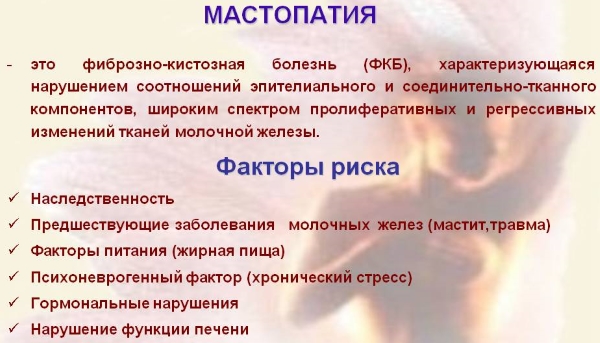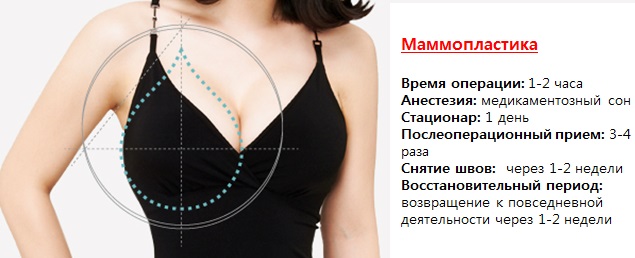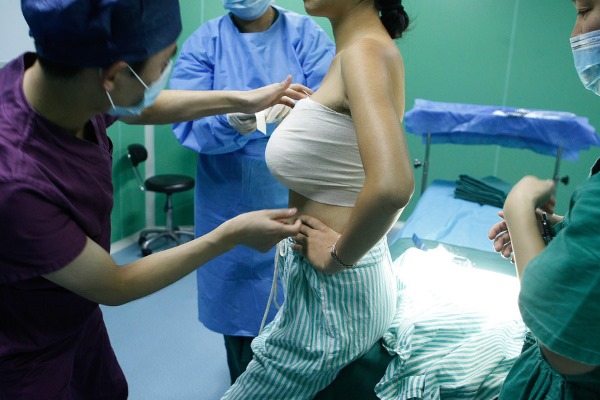Reduction mammoplasty is a plastic surgery consisting in reducing the size of the mammary glands and mastopexy to give a beautiful shape to the breast. The procedure is carried out according to medical indications to eliminate problems caused by curvature of the spine, circulatory disorders, as well as to solve psychological problems that arise when a woman doubts the attractiveness of the mammary glands.
Indications for surgery
The operation to reduce the mammary glands is performed at the request of the patient or according to medical indications.
Appointed in cases where:
- Large breast size puts additional stress on the cervical and thoracic spine, provoking scoliosis and problems with posture.
- Blood circulation is disturbed, oxygen supply to the brain and spinal cord decreases, headaches, fainting appear.
- Breast size does not match body proportions.
- The woman experiences psychological and physiological discomfort associated with the large size of the mammary glands.
- There is a pronounced asymmetry of the mammary glands.
- Ptosis (prolapse) of the breast appears, caused by pregnancy, the consequences of lactation, aging of the skin.
- There is a pathological increase in the volume of the bust under the influence of:
- hormonal disorders;
- a strong increase in body size;
- pregnancy, oxytocin production;
- genetic predisposition to the growth of glandular tissue.
- There is gigantomastia (rapid growth of the breast), provoked by a malfunction of the pituitary gland. In this case, surgical treatment is combined with hormonal therapy.
- The patient has a nodular, fibrous mastopathy. A benign tumor of the mammary glands causes breast enlargement as the connective tissue grows.
- Allergic rash and diaper rash often appear under the breast.
- In men, gynecomastia develops - an increase in the size of the mammary glands with strong physical exertion and abuse of sports nutrition.
Breast volume
Breast reduction surgery is performed when the normal breast volume (275-300 cm³) is 2 or more times higher:
- minor hypertrophy - 400-600 cm³;
- pronounced macromastia - 600-800 cm³;
- a high degree of enlargement of the mammary glands - 800-1000 cm³;
- gigantomastia - more than 1500 cm³.
The basis for the appointment of the operation is:
- the size of one breast is more than 500-3000 g;
- sagging of the bust, which appeared due to the breasts not matching the proportions of the body 2 times or more;
- detection of hypertrophy (one mammary gland is 300-400 g heavier than the other);
Before the procedure, the doctor takes into account:
- growth;
- weight;
- the age of the patient;
- individual physiological characteristics.
During the operation, excess connective (adipose) tissue is cut from the mammary glands and armpits, the size of the halo is reduced if necessary. The nipple moves upward, unnecessary skin is excised, the remaining tissue is tightened, giving the breast elasticity.
Mastopathy
Mastopathy - a pathological process of proliferation of connective tissue, accompanied by the appearance of nodules, cysts, is an indication for the appointment of reduction mammoplasty. During the operation, the amount of adipose tissue decreases, benign tumors and nodes exceeding more than 1 cm in volume are removed.
With fibrocystic mastopathy, the procedure is carried out with extreme caution.
This neoplasm causes loss of original elasticity by skin tissues, which can be complicated by severe scarring in the postoperative period. After the operation, the symptoms of mastalgia disappear, the breast takes on its original shape. The removed neoplasms must be sent for histological examination.

Limitations and contraindications
Breast reduction surgery is not performed if the patient has:
- chronic diseases in the acute stage;
- severe dysfunction of the thyroid gland that does not respond to therapeutic treatment;
- diabetes mellitus;
- cardiovascular pathologies;
- blood clotting disorders;
- pregnancy;
- hypertension;
- emphysema of the lungs;
- oncology.
A temporary refusal in the procedure of reduction mammoplasty is given:
- nursing mothers, until the completion of the lactation process;
- girls under the age of 18;
- if the woman does not have children (the operation is prescribed strictly after childbirth and lactation);
- in the presence of viral infections in the body;
- patients suffering from obesity (the procedure is postponed until the body weight is normalized).
Features of reduction mammoplasty
Special instructions for the appointment of the operation:
- Reduction mammoplasty (like any surgical intervention) is not performed during menstrual bleeding.
- After completion of breast restoration, pregnancy can be planned no earlier than 10-11 months.
- It is better for a woman who has undergone reduction mammoplasty to refrain from feeding her baby with breast milk. Postpartum lactation should be suppressed with hormonal drugs.
- It is advisable to correct the shape of the breast after 1 year from the end of breastfeeding.
Operational reduction of breast volume is preceded by a complete comprehensive examination.
During which the plastic surgeon studies:
- the physiological characteristics of the patient (height, weight, age);
- health status;
- medical history, including data on a genetic predisposition to gigantomastia.
The doctor determines the size of the required intervention, projects the planned result, especially the recovery period, possible complications. If necessary, the removal of excess adipose tissue is combined with liposuction and mastopexy to give the bust a beautiful shape.
Possibilities of reduction mammoplasty
Breast reduction surgery allows:
- eliminate pronounced asymmetry of the breast;
- reduce ptosis;
- reduce the volume of the mammary glands to the desired size;
- return the breasts to their previous shape,
- preserve the natural appearance of nipples and halos;
- eliminate mastopathy, gigantomastia;
- to assist patients in solving psychological problems associated with doubts about female attractiveness.
Preparing for surgery
Preparatory stage of the operation:
- Consultation with a plastic surgeon. The specialist examines and interviews the patient. Reveals a medical history, asks a woman about the presence of endocrinological, gynecological, hereditary pathologies. Assesses the size of the mammary gland, the ratio of adipose and glandular tissues. Correlates the proportions of the patient's body and breast, assesses stretch marks, possible consequences.
- Clinical diagnostic studies, including:
- JSC, OAM;
- the study of hormonal levels;
- blood biochemistry;
- determination of the quality of blood clotting;
- establishing the group and Rh factor;
- analysis for tumor markers;
- determination of the presence of antibodies to HIV, syphilis, Australian antigen, hepatitis virus.
- Consultation with an oncologist.
Breast reduction surgery requires a visit to an oncologist. - ECG.
- Fluorography.
- Ultrasound examination of the mammary glands, mammography.
The operation is carried out only in a planned manner. After the final decision on the need for surgical intervention, passing all the tests, the woman visits a plastic surgeon for the 2nd time.
For determining:
- operation techniques;
- planned results of surgical intervention;
- places and dates of the procedure;
- the duration of the recovery period;
- necessary medications used for anesthesia.
During the 2-3 weeks preceding the operation, a woman is prohibited from:
- Take any medications, dietary supplements, vitamins, except those specially prescribed by your doctor. Hormonal contraceptives, medicines that prevent blood clotting (Aspirin, Analgin) are unacceptable.
- Smoking and drinking alcohol.
- Go to the solarium, sunbathe under direct UV rays.
Hospitalization is carried out the day before the operation or in the morning on the day of the procedure. Before surgery, the patient is visited by an anesthesiologist, who explains the type of drugs to be used for anesthesia, the possible risks of using general anesthesia.
The last meal is allowed no later than 8-9 hours before the administration of drugs. An early (around 20: 00-21: 00 h) light diet dinner is recommended.
What happens during surgery
Breast restoration is carried out using special techniques. The choice of technique is carried out by the doctor depending on the amount of adipose tissue to be removed, ptosis, and the patient's age.
| Operation method name | Execution technique |
| Liposuction | The simplest plastic procedure consists in removing excess fat using a catheter inserted into a puncture between tissues. The least traumatic, but causes additional sagging of the mammary glands. Combines with skin tightening. |
| Periareolar incision | Consists of 2 incisions:
|
| Vertical section (keyhole) | Most popular with plastic surgeons. During the operation, the skin surrounding the areola is cut, then the movement of the scalpel is directed down to the base of the chest |
| T-way (anchor) | It is used in cases when the volume of one breast is more than 500 g. The doctor passes the scalpel around the areola of the nipple, goes down to the breast fold, and then cuts the skin horizontally. |
The sequence of actions of the surgeon:
- A preliminary marking is made on the woman's chest with a medical marker. The shading is carried out in a sitting position, since the glandular tissue spreads out when lying down.
- With a scalpel, the surgeon cuts the skin in accordance with the markings. Excess fat, glandular tissue and excess skin are removed.
- The size of the areola is reduced if necessary. The nipple and areola move upward. The vessels, milk ducts, nerve endings remain intact to maintain breast sensitivity (with the exception of a decrease in the size of the breast with gigantomastia).
- At the end of the operation, the edges of the skin incisions are connected. The deep layers are sutured with self-absorbable sutures, a cosmetic suture is made on the outside along the nipple, on the lower slope of the breast. Drainage is installed in the mammary gland for the outflow of ichor, lymphatic drainage fluid.
- A sterile compression (pressure) bandage is applied over the seams.
- The duration of the operation is 2-4 hours. The procedure is performed under general anesthesia.
Technique for a large bust
In cases where the total volume of one breast is more than 700 g, a T-shaped operation is performed (anchor method). The duration of the procedure is about 3-4 hours. The doctor makes an incision around the nipple halo, then descends vertically down to the location of the total fold, then moves the scalpel horizontally along the entire base of the breast.
During the operation, adipose tissue, part of the glandular, excess skin are removed.
The subcutaneous fat located in the armpit is also eliminated. The nipple and halo are detached, reduced in size, and raised upward by 15 cm or more. The specialist tries to preserve the integrity of the milk ducts, blood vessels, nerve endings. With gigantomastia (the amount of tissue removed is more than 1000 g), this becomes impossible.
The operation carried out by the "anchor method" is necessarily combined with liposuction and mastopexy. "T-method" - traumatic, requires a long recovery period. After the procedure, partial or complete loss of breast sensitivity is possible. Breastfeeding after gigantomastia treatment is almost impossible.
Technique for small and medium bust
Vertical reduction mammoplasty (vertical short suture technique) is prescribed when correcting a small, medium-sized bust (up to 500 g). The duration of the procedure is about 2 hours. Adipose tissue is removed from the incisions made around the halo, stretched vertically down to the total fold.
The operation is less traumatic compared to the classic (T-shaped) technique. For minor ptosis, a breast lift is not required. The operating technique preserves blood vessels, milk ducts, breast sensitivity.
In addition to the above method, the following is used to reduce small breasts:
- Liposuction - Elimination of excess fat using a catheter inserted into the puncture between the breast tissue.
- Periareolar incision method - consisting in conducting two circular incisions along the nipple-areola area, held at a distance from each other.
Recovery process
Within 2 days after the operation, a woman must be in a hospital. The patient spends the first 12 hours in intensive care. Antibacterial drugs, analgesics, decongestants are prescribed to prevent infection, relieve pain symptoms, edema.
On the 3rd day, the woman is discharged from the hospital. During the next 2 weeks, the patient needs to be on outpatient observation, come to the doctor's control, dressing, wound treatment. The stitches are removed for 8-15 days. Swelling and bruising disappear after 3 weeks.
In the postoperative period, a woman should:
- constantly wear compression (supportive) underwear (at least 3-4 months);
- during sleep, put a roller-shaped pillow under your back to relieve tension, reduce edema (14 days);
- lie only on your back (until the stitches are removed);
- refuse to take a bath (a shower is allowed on the 5th day after the operation);
- abstain from sexual activity (until the stitches are removed);
- remove salty and spicy foods from the diet, reduce daily water intake (no more than 4 glasses);
- refuse cigarettes, alcoholic beverages, taking vasoconstrictor drugs;
- carefully wash the breast with running water, the use of washcloths is excluded (at least 1.5 months);
- refrain from visiting the sauna, swimming pool, solarium, fitness club, jacuzzi (up to 3 months after the operation);
- reduce any physical activity (up to six months);
- exclude diets (weight loss can return the preoperative breast shape);
- protect yourself from possible conception (at least 7 months).
After the operation, you need to rest as much as possible, be sure to follow the doctor's recommendations. If you experience any discomfort in the chest area, you should immediately contact the clinic.The final results of the operation can be assessed only after a year.
Possible complications
Surgery to reduce the size of the mammary glands can be accompanied by complications that arise after the completion of the procedure. Separate early and late adverse effects. The first ones appear within the first 12 hours after the completion of surgical interventions.
These include:
- Hematoma - a large number of blood clots collected in one place, caused by vascular injury. Without the necessary treatment, it can be complicated by suppuration, tissue necrosis.
- Seroma - fluid accumulation caused by trauma to the lymph nodes during surgery. To prevent pathology, drainage must be inserted.
- Divergence of postoperative sutures occurs when there is a strong tension in the tissues or a surgeon's mistake.
- Infection and suppuration of the seam... Occurs with hematoma, seroma, ingestion of pathogenic bacteria. Eliminated by antibacterial therapy.
- Soft tissue necrosis occurs after the removal of a large number of fat cells, circulatory disorders.
Late consequences appear several days or months after the end of the operation:
- Impaired nipple sensitivity. It can be full or partial. Develops on the 3rd day after treatment. During the operation carried out by the "vertical incision method", it recovers on its own in 3-6 months.
- Rough scarring of the tissue occurs with a large volume of the removed cavity.
- Secondary enlargement of the mammary glands (hypertrophy). Occurs in cases:
- if macromastia was caused by hormonal disorders that were not eliminated before surgery;
- pregnancy and breastfeeding;
- changes in the volume of the mammary glands in a girl under the age of 18;
- weight loss of the patient.
- Nipple retraction occurs when the scar tissue contracts.
- Nipple migration and halos. Appears after elimination of gigantomastia, may be caused by a surgeon's mistake.
- Deformation of the nipple-areola complex.
- Thrombophlebitis, thromboembolism.
In order to avoid unpleasant consequences, you need to take a responsible approach to the choice of a clinic and a plastic surgeon, strictly follow the instructions of the attending physician.
results
The recovery period after reduction mammoplasty takes at least 6 months. This time is necessary for the restoration of the body, tissue regeneration, and scar healing. The first results can be seen 2 weeks after the disappearance of edema, bruising, removal of stitches.
Within six months, you must wear compression underwear, use special ointments, creams. After 7-12 months, the breast will take its final shape.

 Don't miss the most popular column article: Breast lift without implants - all methods, methods and procedures. Efficiency, before and after photos.
Don't miss the most popular column article: Breast lift without implants - all methods, methods and procedures. Efficiency, before and after photos.Will the scars remain
Sewing up the incision, the plastic surgeon places small cosmetic stitches in inconspicuous places (around the halo, on the lower slope of the breast). The mammary gland takes on a new shape. After 6 months, the scars fade, becoming almost invisible. A woman can safely be on the beach, including topless.
In the case of the operation using the classical method (if it is necessary to remove a large amount of adipose tissue), the formation of large scars is possible. After 1 year (as well as if a large amount of scar tissue is found), it is possible to use hardware scar removal.
Is it possible to breastfeed after surgery
The possibility of breastfeeding after breast reduction depends entirely on the method of surgery. Technique "vertical incision", "liposuction", "method of periareolar incision" imply the complete preservation of milk ducts, blood vessels and nerve endings.
The classical method (T-shaped operation), used when removing a large amount of adipose tissue, can injure the ducts, making lactation difficult to restore (impossible with gigantomastia).
Despite the possibility of breastfeeding after sparing surgery, plastic surgeons do not recommend prolonged lactation.
Fear of doctors calls out the mandatory process of breast augmentation that occurs during pregnancy and lactation (with increased production of the hormone prolactin). Prolonged stretching of the tissue can return the mammary glands to their preoperative shape, negating previous surgical treatment.
How to choose a clinic
Breast reduction surgery must be performed only by a qualified plastic surgeon in a state (municipal) hospital or in an accredited medical clinic.
When choosing a place for the procedure and a doctor, you should contact the resources of the global network to study:
- reviews of patients who have undergone breast restoration;
- photos taken before and after breast reduction.
When considering commercial offers from various clinics, you need to pay attention to:
- the organization has medical accreditation to provide plastic surgery services;
- the cost of the operation;
- reviews of patients who have visited the walls of the hospital;
- qualification of working personnel.
The choice of the surgeon for the operation is of great importance. Having studied the Internet reviews, the points assigned to the specialist by the clients on the clinics' websites, you should select at least 3 doctors with the greatest practice. Each candidate must make an appointment for a personal appointment or an online consultation.
Before the conversation, it is recommended to prepare a list of questions to clarify:
- the qualifications of the doctor, the number of such operations performed by him per day;
- the cost of the procedure, including postoperative care;
- operation techniques;
- guaranteed result;
- drugs that are planned to be used in the postoperative period;
- the duration of the recovery process;
- possible risks of the operation;
- location of the procedure;
- staff responsible for managing postoperative care.
It is imperative to inquire about what to do in case of late postoperative complications. Clinic staff and the attending physician must be available to the patient 24 hours a day / 7 days a week.
It must be remembered that each person is individual, unforeseen situations and reactions of the body are possible. Reduction mammoplasty should only be performed in a trusted medical facility under the guidance of an experienced physician.
How much does it cost in public and private clinics
It is possible to reduce the size of the bust in European clinics, medical centers in Israel, Russian plastic surgery centers.
| The state | The cost of the procedure | Services included in the price |
| Switzerland | from 10-15 thousand euros |
|
| Germany | from 7 thousand euros | |
| Israel | from 280 thousand rubles | |
Russia |
| |
| SM-PLASTIC (Moscow) | from 150,000 rubles | |
| Frau Klinik (Moscow) | from RUB 300,000 | |
| Medical center "Reform" (Moscow) | from RUB 180,000 | |
| Avromed (Moscow) | from 250,000 rubles. | |
| Brazil (Kaliningrad) | from 150,000 rubles. | |
| JK Plastic Surgery Center (St. Petersburg, Moscow) | from 200,000 rubles. | |
| Clinic of Dr. Prikhodko (St. Petersburg) | from 170,000 rubles. | |
The largest number of clinics that provide the service of reduction mammoplasty are located in Moscow and the Moscow region. Operations are performed by private clinics. The cost of treatment varies from 150,000 to 400,000 rubles.depending on the qualifications of the doctor, hospital staff, location of the procedure.
Plastic surgery aimed at reducing the mammary glands helps prevent curvature of the spine, poor posture, and eliminate headaches. In addition to the practical benefits for the body, reduction mammoplasty helps to cope with psychological problems, restoring the woman's confidence in her own attractiveness.
Article design: Anna Vinnitskaya
Video about breast reduction surgery
Breast reduction or breast reduction surgery:





